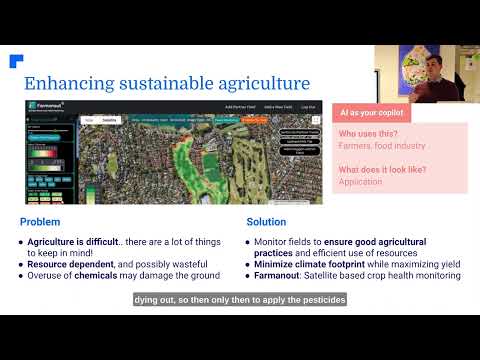Urgent: Minnesota Schools Underreport Radon Testing – Health Risks for Students and Staff Exposed
“Only 16% of tested Minnesota schools showed elevated radon levels, yet fewer than half conducted tests from 2018-2022.”
We are deeply concerned about the recent findings regarding radon testing in Minnesota schools. As experts in environmental health and safety, we feel compelled to shed light on this critical issue that affects the well-being of our students and staff. The alarming gaps in public health safety revealed by the Minnesota Department of Health (MDH) report demand our immediate attention and action.
Understanding the Radon Threat in Minnesota Schools
Radon, an odorless and colorless gas, is the second leading cause of lung cancer in the United States. In Minnesota, the geology of our state makes us particularly susceptible to this silent threat. The gas seeps into buildings through cracks or openings in walls and foundations, potentially exposing occupants to dangerous levels of radiation.
The recent MDH report has brought to light a disturbing trend: fewer than half of Minnesota’s public schools conducted radon tests from 2018 to 2022. This underreporting leaves us with significant gaps in our knowledge about the safety of our educational environments.

Key Findings from the MDH Report
- Only 39% of schools conducted radon tests between 2018 and 2022
- 16% of tested schools showed elevated radon levels in one or more classrooms
- Testing is less likely in school districts serving more low-income families
- Counties with the most schools testing for radon were clustered in the metro area and in south central and southeastern Minnesota
These statistics paint a concerning picture of the current state of radon testing in our schools. While there is no legal requirement for schools to conduct these tests in Minnesota, health officials strongly encourage regular testing to ensure the safety of our educational environments.
The Health Risks of Radon Exposure
Radon exposure poses significant health risks, particularly for children. Compared to adults, children breathe in twice the amount of radon due to their smaller lung size and higher respiratory rate. This increased exposure makes them more vulnerable to the long-term effects of radon, including an elevated risk of lung cancer later in life.
It’s crucial to understand that radon is a cumulative risk. The longer the exposure, the greater the potential for health problems. For students and staff who spend a significant portion of their day in school buildings, ensuring low radon levels is paramount to protecting their long-term health.
Disparities in Radon Testing
One of the most troubling aspects of the MDH report is the disparity in testing rates among different school districts. The findings indicate that schools in low-income areas are less likely to conduct radon tests. This inequality in testing practices potentially exposes students and staff in these districts to greater health risks.
We must address this disparity to ensure that all students, regardless of their socioeconomic background, have access to safe learning environments. Equal protection against radon exposure should be a priority for all school districts across Minnesota.
Recommended Radon Testing and Mitigation Strategies
To address the radon issue in Minnesota schools, we recommend the following strategies:
- Regular Testing: All schools should conduct radon tests at least every five years, or more frequently if elevated levels are detected.
- Comprehensive Coverage: Ensure that all areas of the school building, especially ground-floor classrooms and offices, are tested.
- Prompt Mitigation: If elevated radon levels are found, schools should implement mitigation measures immediately.
- Ongoing Monitoring: After mitigation, continue to monitor radon levels to ensure the effectiveness of the measures taken.
- Education and Awareness: Provide information to students, parents, and staff about radon risks and the importance of testing.
“Two out of five Minnesota homes have high radon levels, making it the second leading cause of lung cancer.”
Radon Testing in Minnesota Homes
The radon issue extends beyond our schools. The MDH report also highlights that two out of five Minnesota homes tested have high radon levels. This statistic underscores the importance of radon awareness and testing in residential areas as well.
We encourage all Minnesota residents to test their homes for radon. The only way to know if you’re at risk is to test. If high levels are detected, mitigation systems or HVAC repairs can effectively reduce radon exposure for you and your family.

The Role of Technology in Radon Detection and Mitigation
As we confront the challenges of radon in our schools and homes, it’s important to recognize the role that technology can play in detection and mitigation efforts. Advanced monitoring systems and data analysis tools can help us better understand radon patterns and develop more effective strategies for reducing exposure.
At Farmonaut, while our primary focus is on agricultural technology, we understand the importance of environmental monitoring and data-driven decision-making. Our expertise in satellite-based monitoring and AI-driven analysis could potentially be adapted to support radon detection efforts in the future.
For now, we encourage schools and homeowners to take advantage of the low-cost testing kits available through the Minnesota Department of Health. These affordable tools are a crucial first step in identifying and addressing radon risks.
Radon Testing in Minnesota Schools (2018-2022)
| Category | Percentage | Number of Schools | Notes |
|---|---|---|---|
| Schools that conducted radon tests | 39% | Approximately 780 | Based on MDH report |
| Schools with elevated radon levels | 16% | Approximately 125 | Of those tested |
| Low-income districts participating in testing | 30% (estimated) | Unknown | Lower participation rate observed |
| Schools requiring mitigation | 16% | Approximately 125 | Based on elevated levels found |
| Average radon levels in tested schools | N/A | N/A | Varies by location |
| Estimated student exposure risk | 61% | Approximately 1,220 schools | Based on untested schools |
| Cost of testing per school | N/A | N/A | Varies, low-cost kits available from MDH |
The Importance of Indoor Air Quality in Schools
While our focus has been on radon, it’s important to consider the broader context of indoor air quality in schools. Radon is just one of several potential air quality concerns that can affect the health and well-being of students and staff. Other factors include:
- Proper ventilation
- Mold and moisture control
- Control of allergens and irritants
- Management of chemical pollutants
A comprehensive approach to indoor air quality can help create healthier learning environments and reduce absenteeism due to respiratory illnesses. Schools should consider implementing Indoor Air Quality (IAQ) management plans that address multiple aspects of air quality, including radon testing and mitigation.
Taking Action: What Can We Do?
Addressing the radon issue in Minnesota schools requires a collective effort from various stakeholders. Here are some steps we can take:
- Advocate for Mandatory Testing: While current laws don’t require radon testing in schools, we can advocate for policy changes that would make testing mandatory.
- Support Funding Initiatives: Encourage lawmakers to allocate funds for radon testing and mitigation in schools, especially in low-income districts.
- Raise Awareness: Educate parents, teachers, and community members about the risks of radon and the importance of testing.
- Encourage Home Testing: Promote radon testing in homes, as children spend significant time there as well.
- Collaborate with Experts: Work with environmental health professionals and organizations to develop comprehensive radon management strategies.
Resources for Radon Testing and Mitigation
For those looking to take action on radon testing and mitigation, here are some valuable resources:
- Minnesota Department of Health: Offers low-cost radon testing kits and information on radon in schools. Visit their website or email [email protected] for more information.
- Environmental Protection Agency (EPA): Provides comprehensive guidelines on radon testing and mitigation in schools.
- Local Health Departments: Many county health departments offer radon testing services and can provide local guidance on mitigation.
- Certified Radon Professionals: For schools or homes requiring mitigation, it’s important to work with certified radon mitigation specialists.
While Farmonaut’s primary focus is on agricultural technology, we recognize the importance of environmental health and safety. Our expertise in data analysis and monitoring could potentially contribute to future innovations in radon detection and mitigation strategies. For now, we encourage all stakeholders to utilize the resources available through official health and environmental agencies to address this critical issue.
Frequently Asked Questions (FAQ)
- What is radon and why is it dangerous?
Radon is a naturally occurring radioactive gas that can accumulate in buildings. It’s the second leading cause of lung cancer and is particularly dangerous because it’s odorless and colorless. - How often should schools test for radon?
The EPA recommends that schools test for radon at least every five years, or more frequently if elevated levels are found or significant changes are made to the building structure or HVAC system. - What are considered “elevated” radon levels?
The EPA recommends taking action if radon levels are 4 picocuries per liter (pCi/L) or higher. - How can schools mitigate high radon levels?
Mitigation typically involves installing a radon reduction system, which can include sub-slab depressurization, improved ventilation, or sealing entry points. - Are there any symptoms of radon exposure?
There are no immediate symptoms of radon exposure. The health effects, such as lung cancer, typically develop after long-term exposure.
Conclusion: A Call to Action for Radon Testing in Minnesota Schools
The underreporting of radon testing in Minnesota schools is a serious public health concern that requires immediate attention. With only 39% of schools conducting tests between 2018 and 2022, and 16% of those tested showing elevated levels, we face a significant challenge in ensuring safe learning environments for our students and staff.
We must prioritize comprehensive radon testing and mitigation strategies across all Minnesota schools, with particular attention to low-income districts where testing rates are lower. By raising awareness, advocating for mandatory testing, and supporting funding initiatives, we can work towards creating healthier educational spaces for all.
Remember, radon is a preventable risk. Through diligent testing, prompt mitigation, and ongoing monitoring, we can significantly reduce the health risks associated with radon exposure in our schools and homes. Let’s take action now to protect the health and future of our communities.
For more information on radon in schools or radon in Minnesota, visit the MDH website or email [email protected].
While our focus at Farmonaut is on agricultural technology, we understand the importance of environmental health and safety. Our commitment to data-driven solutions and environmental monitoring aligns with the need for comprehensive approaches to issues like radon testing. To learn more about our innovative agricultural solutions, visit our website or explore our mobile apps:
For developers interested in integrating agricultural data into their own systems, check out our API and API Developer Docs.
Earn With Farmonaut: Affiliate Program
Earn 20% recurring commission with Farmonaut’s affiliate program by sharing your promo code and helping farmers save 10%. Onboard 10 Elite farmers monthly to earn a minimum of $148,000 annually—start now and grow your income!







